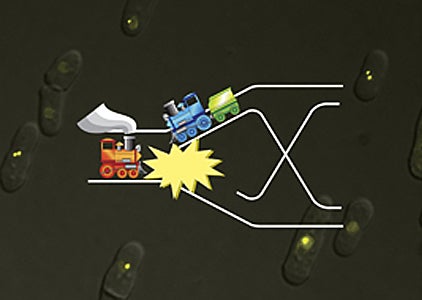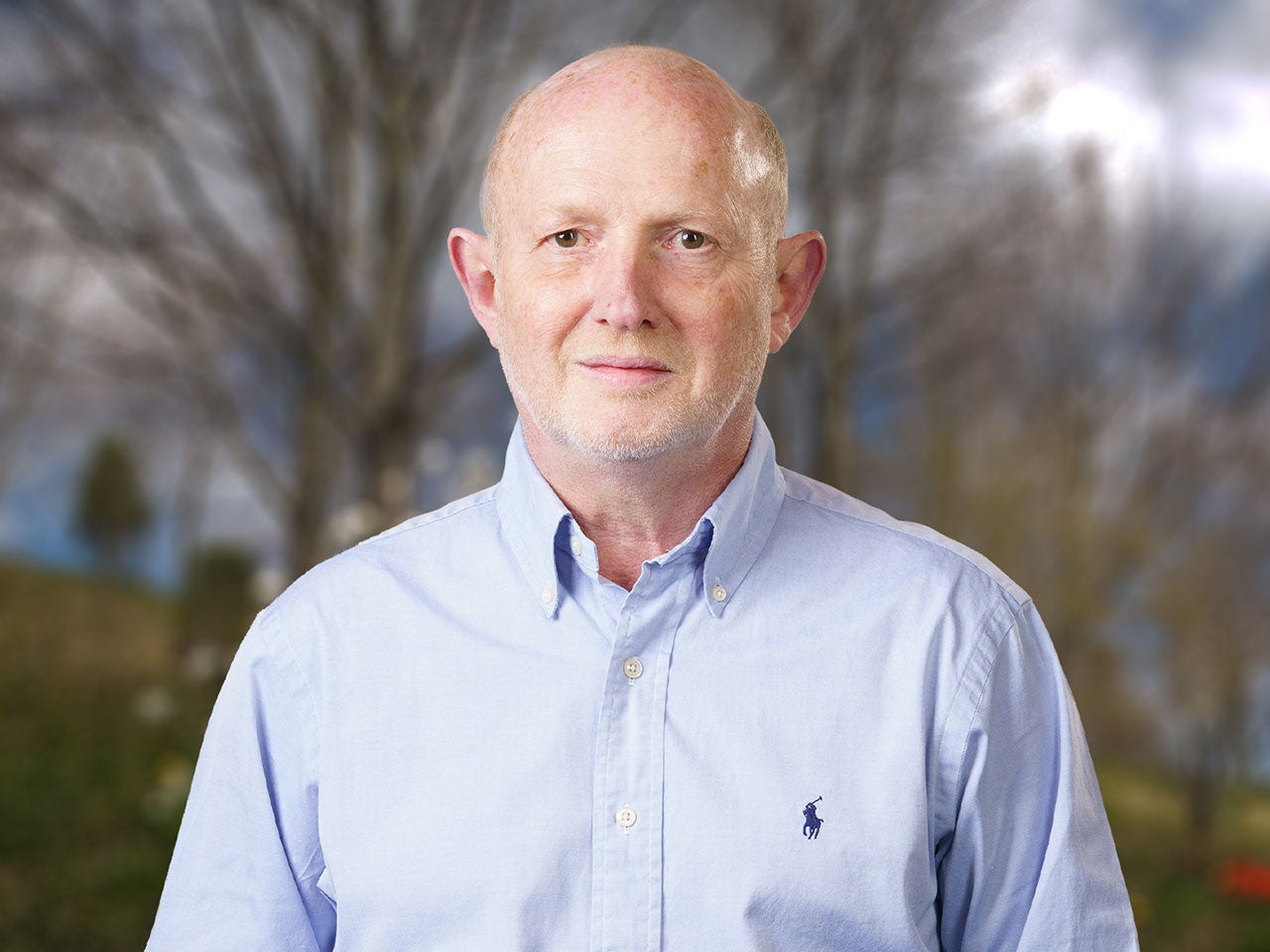A new study in Nature by CSHL Professor Rob Martienssen and his group describes a new role for RNAi during chromosomal replication, one that allows the DNA replication process to progress smoothly without resulting in DNA damage.
Cold Spring Harbor, NY — At the same time that a cell’s DNA gets duplicated, a third of it gets super-compacted into repetitive clumps called heterochromatin. This dense packing serves to repress or “silence” the DNA sequences within—which could wreck the genome if activated—as well as regulate the activity of nearby genes. When the cell divides, the daughter cells not only inherit a copy of the mother cell’s DNA, but also the exact pattern in which that DNA is clumped into heterochromatin.
This “epigenetic” mode of inheritance—information not transmitted through the DNA code itself but by the way in which it is packaged—has long been investigated by Cold Spring Harbor Laboratory Professor and HHMI-GBMF Investigator Rob Martienssen. In a landmark study that was hailed as one of the breakthroughs of the year by Science magazine in 2002, Martienssen and his colleagues showed that the inheritance of heterochromatin depends on a set of mechanisms broadly defined as RNA interference (RNAi).

In a new study that appeared online ahead of print in Nature on October 16, Martienssen’s team, including investigators from the Pasteur Institut in Paris and the University of Salamanca in Spain, describes a new role for RNAi, one that allows the DNA replication process itself to progress smoothly without resulting in DNA damage.
DNA is normally coiled around proteins called histones, which when chemically modified at specific locations, aggregate into dense arrays to form heterochromatin. Martienssen and others had previously found that RNAi guides this histone modification process, which occurs at the same time in the cell cycle when DNA is being duplicated.
In this RNAi-guided process, an enzyme called RNA polymerase II copies or “transcribes” specific regions of DNA into RNA molecules, and somehow this modifies histones in those exact regions, thereby creating heterochromatin.
These heterochromatic regions, however, alternate with so-called “origins of replication”—spots on the DNA where DNA-building proteins can bind, unzip the double-stranded DNA molecule to create a replication “fork,” and begin to build a new strand of it.
This alternate arrangement of regions to be transcribed for heterochromatin assembly and regions that serve as origins for DNA replication raised a new question: how do the transcription machinery and the replication machinery work in tandem without colliding with each other and as a result stall the replication fork and trigger DNA damage?
In a recent study, Martienssen collaborated with scientists at the University of California at Berkeley and showed that the DNA-building proteins themselves could latch on to histone-modifying proteins and pull them along the replication fork.
“This finding raised the question of what role RNAi actually plays during the replication phase of the cell cycle,” says Martienssen. “The answers to both questions turned out to be very simple and elegant.”
His group’s experiments in fission yeast, a simple model system used for studying heterochromatin, show that when the RNA polymerase II enzyme has transcribed a stretch of DNA into RNA, the RNAi mechanism causes the enzyme to release its hold on the DNA and fall away. This allows the replication fork to progress smoothly and the DNA strands to be copied by the replication machinery. The histone-modifying proteins, which follow right along, establish heterochromatin.
The scientists found that failure or absence of the RNAi mechanism stalls replication, which triggers a strong “DNA damage” alert within the cell. That’s when a repair mechanism called homologous recombination kicks in and repairs the stalled fork, but the ability to modify histones is lost.
“These experiments have revealed the real role of RNAi during the cell’s replication phase, which is to protect cells from this sort of replication-associated fork damage,” according to Martienssen.
Written by: Hema Bashyam, Science Writer | publicaffairs@cshl.edu | 516-367-8455
Funding
This work was supported by grants from the Spanish Ministry of Science and the National Institutes of Health.
Citation
“RNAi promotes heterochromatic silencing through replication-coupled release of RNA Pol II” appears online in Nature on October 16. The full citation is: Mikel Zaratiegui, Stephane Castel1, Danielle V. Irvine, Anna Kloc, Jie Ren, Fei Li, Elisa de Castro, Laura Marı´n, An-Yun Chang, Derek Goto, W. Zacheus Cande, Francisco Antequera, Benoit Arcangioli & Robert A. Martienssen. The paper can be downloaded at http://dx.doi.org/ using the doi 10.1038/nature10501.
Principal Investigator

Rob Martienssen
Professor & HHMI Investigator
William J. Matheson Professor
Cancer Center Member
Ph.D., Cambridge University, 1986